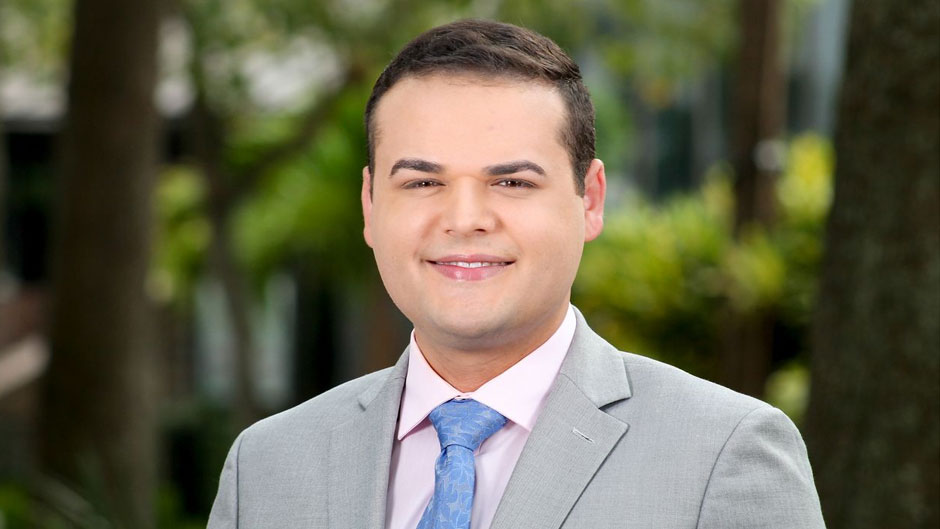Sallie Hughes has been studying violence against journalists, especially in Mexico, since the early 2000s.
“During that time, types of violence against journalists became more diverse and widespread,” said Hughes, professor and associate dean at the University of Miami School of Communication.
The violence hit much closer to home on Wednesday. Dylan Lyons, a 24-year-old television reporter was shot and killed. And his colleague, photojournalist Jesse Walden, was critically wounded as they sat in their vehicle near the scene of a homicide in Pine Hills, a town of modest homes and tree-lined streets west of Orlando.
Sheriff’s deputies arrested a 19-year-old suspect carrying a Glock 40 semi-automatic pistol. After allegedly shooting 38-year-old Nathacha Augustin earlier in the day, the suspect returned to the scene where the Spectrum News 13 journalists were shot. The suspect then allegedly entered a nearby home and shot a mother and her 9-year-old daughter. The girl, T’yonna Major, died at the hospital. The mother remains in critical condition. The suspect is in custody but is not cooperating with police, according to the Orange County Sheriff’s Office. They said the accused had previously been arrested for violent offenses.
Antonio Mora, the Frances L. Wolfson Chair in Communication and faculty advisor for The Miami Hurricane student newspaper, shared his worry for reporters in the field.
“I’m really concerned these days, especially at local news stations, where you have people going out as multimedia journalists by themselves,” Mora said. “There are situations where they have no one else looking out for them.”
Mora, an Emmy Award-winning journalist and television news anchor, worked in New York, Los Angeles, and Chicago before moving to Miami. While there were moments he did not enjoy his reporting situations, he felt safety in numbers when he had a crew, producers, and others on assignment with him.
Risk comes with the job, Mora said, and reporting in extreme conditions—such as hurricanes—is not safe. Journalists should not be shy about expressing concerns to their management, he noted.
“I had the pleasure of working with Dylan when I worked in Gainesville,” said Briana Nespral, a 2018 graduate of the School of Communication. “He was one of the most passionate and hardworking reporters I came across. He had a love for journalism and storytelling. Although we worked at two different stations, the news community is tight knit. We often worked on the same stories, tag teaming to get the good interview. He always talked about his love for his family and his dream of working in Orlando.”
The Spectrum News 13 published a moving tribute to Lyons on Thursday morning.
Joseph B. Treaster, a professor in the School of Communication, has more than 30 years’ experience as a reporter and foreign correspondent for The New York Times. He has covered wars, natural disasters, and drug violence in Vietnam, Laos, Cambodia, and throughout the Middle East and Latin America.
“There’s a lot of violence in America these days, lots of guns,” Treaster said. “That makes it more dangerous for journalists and everyone else. Reporters need to think protectively and defensively. The Orlando shootings tell us no one can take safety for granted.”
As an international correspondent, Treaster recalled working on a story about drug dealing and drug treatment in the Bronx and being chased by a man wielding a knife.
“Reporters going into wars around the world now routinely get security training,” Treaster said. “We need to consider providing that kind of training for reporters working at home in the United States.”
Hughes said that journalists working in dangerous situations overseas often work together in teams for safety. “Competition among journalists and media outlets in the most dangerous parts of the world does not really exist anymore,” she said. “Journalists are collaborating for safety, not competing.”
Lyons’ death is the first journalism killing documented in 2023 in the United States. One journalist was killed in the United States in 2022, according to the Committee to Protect Journalists. Jeff German, a reporter with the Las Vegas Review-Journal who covered politics and corruption, was found dead outside his home with multiple stab wounds.
In 2018, five journalists were killed at the Capital Gazette in Annapolis, Maryland, when a shooter entered the newsroom in what was reported by police as a “targeted attack” against the newspaper. In August 2015, two journalists—Alison Parker and Adam Ward—who worked for the WDBJ TV station in Roanoke, Virginia, were killed while doing an on-air interview. At the time, the shooting also was streamed by the gunman, who used social media to document the horrific crime.
“This is every reporter’s worst nightmare. Oftentimes, it’s the youngest of us who chase after the big story, forgetting the risks associated with what we do,” added Nespral, who now works as a reporter for WPTV in West Palm Beach. “Journalists face these dangers every single day. We go into communities, safe or not, talking to victims of tragedies, never expecting to become one. It’s a tough job. We don’t do it for the recognition but for the passion. To think this could have been any one of us, is heartbreaking.”
With the emotional, mental, and physical stress journalists endure while on the job still needing more exploration, Hughes said that at a minimum, journalism students should be taught trauma-informed interviewing and storytelling, as well as psychological self-care before, during, and after coverage of a traumatic event.
“We understand media and the culture of journalism,” Hughes added. “But we need help from our psychology and public health colleagues to expand our knowledge in the area of psycho-emotional safety.”

